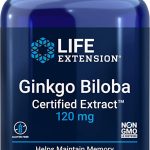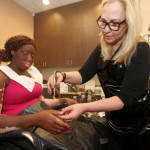What Is Segmental Vitiligo And What Can You Do About It?

What is segmental vitiligo?
Segmental vitiligo is a type of vitiligo that affects only certain areas of the body. It usually starts as a small patch of white skin and then spreads to other areas. Segmental vitiligo can occur on any part of the body, but it most commonly affects the face, neck, hands, and feet.
There is no cure for segmental vitiligo, but there are treatments that can help improve the appearance of the affected skin. Treatment options include topical steroids, light therapy, and surgery.
Segmental vitiligo is a relatively uncommon form of vitiligo, affecting about 10-20% of all people with the condition. It tends to develop before the age of 20 and is more common in women than men.
How does Segmental Vitiligo spread?
There are a few different ways that segmental vitiligo can spread. One way is through the Koebner phenomenon, which happens when skin trauma causes the development of new areas of vitiligo. This can happen with cuts, scrapes, burns, or even insect bites. Another way segmental vitiligo can spread is through melanocyte migration, where healthy melanocytes from one area of skin migrate to an area of skin with vitiligo and start to produce pigment there. This usually happens slowly over time and is thought to be the reason why some people with segmental vitiligo find that their patches gradually get bigger.
How to prevent Segmental Vitiligo?
There is no sure way to prevent segmental vitiligo. However, there are some things you can do to reduce your risk:
1. Avoid sun exposure. Segmental vitiligo often appears after sunburn or other forms of skin trauma. If you must be in the sun, use sunscreen and cover up as much as possible.
2. Manage stress. Stress can trigger or worsen vitiligo. Find healthy ways to manage stress, such as exercise, meditation, or therapy.
3. Eat a healthy diet. A balanced diet helps support overall health and may help reduce the risk of vitiligo. Include plenty of fruits, vegetables, whole grains, and lean protein in your diet.
4. Avoid triggers. If you know what triggers your vitiligo (such as certain chemicals or foods), avoid them if possible.
Is there treatment for Segmental Vitiligo?
There is no known cure for segmental vitiligo, but there are treatments that can help to slow the progression of the condition and improve the appearance of affected areas.
Topical corticosteroids are often prescribed to reduce inflammation and pigment loss. Other topical treatments, such as, calcineurin inhibitors, which can help to stop the immune system from attacking melanocytes, and phototherapy, which uses ultraviolet light to stimulate repigmentation.
In some cases, systemic medications may be necessary to control the immune system and promote repigmentation. These include immunosuppressants such as methotrexate and cyclosporine, as well as biologic agents such as interferon alpha.
Segmental vitiligo can be a difficult condition to manage, but with proper treatment, it is possible to improve the appearance of affected areas and slow the progression of the disease.
What is the prognosis for people with Segmental Vitiligo?
There is no cure for segmental vitiligo, but the condition can be managed with treatment. The goal of treatment is to improve the appearance of affected areas and slow the progression of the disease.
Most people with segmental vitiligo have patches of pigment loss on their skin that can be cosmetically troubling. In some cases, the pigment loss can lead to social or emotional distress.
The good news is that there are treatments available that can help to improve the appearance of affected areas and lessen the emotional impact of the condition. With proper treatment, most people with segmental vitiligo can lead normal, healthy lives.
Most successful treatments for segmental vitiligo:
- Vitiligo patients have seen some great results with unani medicine.
- Ayurvedic treatment has also shown excellent results.
- Certain polishes, lotions and dyes are effective in vitiligo concealment.
- A number of vitamins are beneficial in boosting the immune system and controlling the spread of vitiligo.
Treatment of segmental vitiligo with normal-hair follicle autograft
There are many ways to treat segmental vitiligo, but one of the most effective is normal-hair follicle autograft. This involves taking hair follicles from healthy skin and transplanting them into the affected area. This can help to restore pigment and improve the appearance of the skin.
Segmental vitiligo can be a difficult condition to treat, but normal-hair follicle autograft can be an effective option. This treatment can help to restore pigment and improve the appearance of the skin. If you are considering this treatment, be sure to talk to your doctor about all of your options and what is best for your individual case.
What to do if you have segmental vitiligo?
If you have segmental vitiligo, it’s important to remember that you’re not alone. There are many people out there who suffer from this condition and there are plenty of resources available to help you manage it. With the right treatment plan, you can minimize the appearance of your vitiligo and improve your quality of life.











